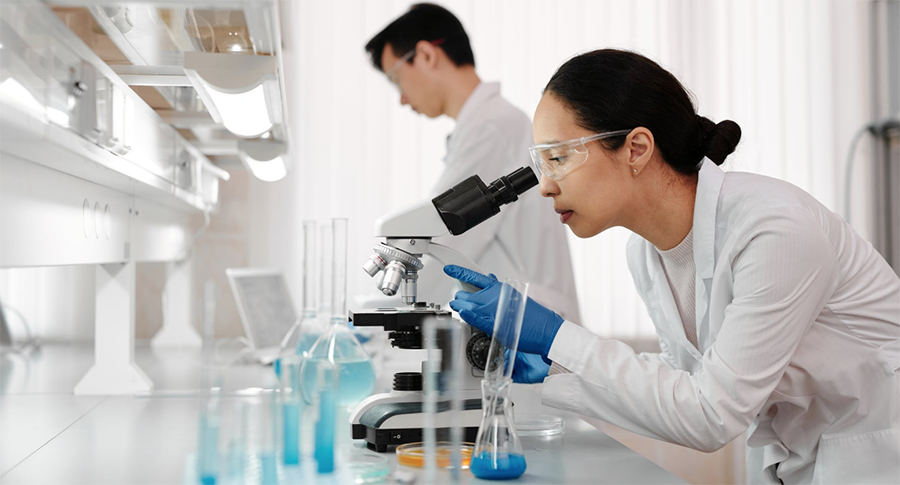
When it’s time to relocate your laboratory, careful planning long before the actual move date will make the difference between success and disaster. See last month’s blog for a timeline of exactly what should be done and when, but for a view from 30,000 feet of the process complete with best practices, see below:
Who’s On the Team?
Choose who you want to be involved with the move. Utilize key employees to act as “move captains” but take care to involve all staff in the process. As your timeline emerges, meet regularly with your internal team to keep everyone informed and to address issues as they arise.
Cold Storage Transport
Maintaining the integrity of your research during the move means paying attention to every detail. If you have samples or substances that require storage at exact temperature ranges and requirements, keep appropriate cold-storage transport procedures in place. Be sure to identify a backup freezer in case of emergency and make sure to have dry ice on hand the day of the move.
Hire Specialists
Most laboratory equipment is sensitive and fragile, requiring expensive re-calibrations even when you move them from one bench to the other. It’s falsely economical to trust that equipment to a cut-rate moving company, hoping against hope that they won’t damage it. Spending the money to get a qualified moving company that you can trust to move your sensitive equipment will save you a lot of money and countless staff hours in the long run.
Preserve Chain of Custody
If your lab handles evidence for law enforcement agencies or other items that need chain-of-custody documentation, be particularly careful. While expensive upfront, it may turn out to be more economical and safer in the long term to arrange an escort who can maintain the chain of custody for certain items during relocation.
Hazardous Materials
It’s not unusual for a lab to contain items that have been classified as hazardous materials by the Department of Transportation. Consult authorities to get information about the legal and safety implications of transporting any type of hazardous materials. You will need to take steps to ensure the public’s safety when transporting potentially dangerous items.
Live Animals
Live animals need food and water—a unique consideration when transporting them during a lab relocation. Hanging water bottles is a solution to keep animals hydrated, but they frequently leak during transportation—soaking the animals’ bedding and leading to hypothermia or even death. If the animals in your lab are part of an experiment, they will require chain-of-custody documentation or other provisions to ensure the integrity of scientific research.
Avoid Cross-Contamination
Because cross-contamination can negatively affect the outcome of your research for years into the future, be especially careful to ensure that no items become cross-contaminated during your lab relocation.
Calibration Considerations
Confirm with your contacts at your instrumentation companies to see if your arrangement with them includes post-move calibration, even if they are not involved in packing, moving, and unpacking the instruments. Are you still indemnified even if you use a separate moving company? Ask how that process will affect your warranty.
Plan Your Route
Walk through your intended route with a tape measure and the measurements of everything that will be moved during your lab relocation. Will everything fit through doorways? If not, you will need to map out an alternate route—better to do that in advance than while the clock is ticking on moving day.
Record Specifications
Documenting the weight, dimensions, electrical connections, temperature, and humidity requirements of each item being moved will save you money. For example, you will want to know in advance if your new table is going to hold pieces of heavy new equipment before you move into the new lab. Figuring that out on the day of the move will be an expensive, time-consuming problem you don’t need.
Inform Everyone
Your team of researchers is likely data-driven like most efficient scientists. Be sure you communicate fully with them so they can plan for exactly when their equipment will no longer be available. Make sure you are aware of how long each piece of equipment will take to move and place back in operation. The facilities managers—both in the building you are vacating and the one you’re moving into—also need to be kept up to date. Keep them in the loop so they can oversee utilities connections and disconnections, provide adequate staging areas for packing crates, and make loading docks available when needed.
Understand and Comply.
Is your lab governed by GLP or GMP guidelines? Address if and how you will need to comply with federal and state regulations long before move-in day, so you can obtain needed documentation.
Any lab relocation, no matter how big or small, can be a stressful experience for everyone involved. Taking the time to plan and develop a roadmap in advance will help keep the process on the rails.

